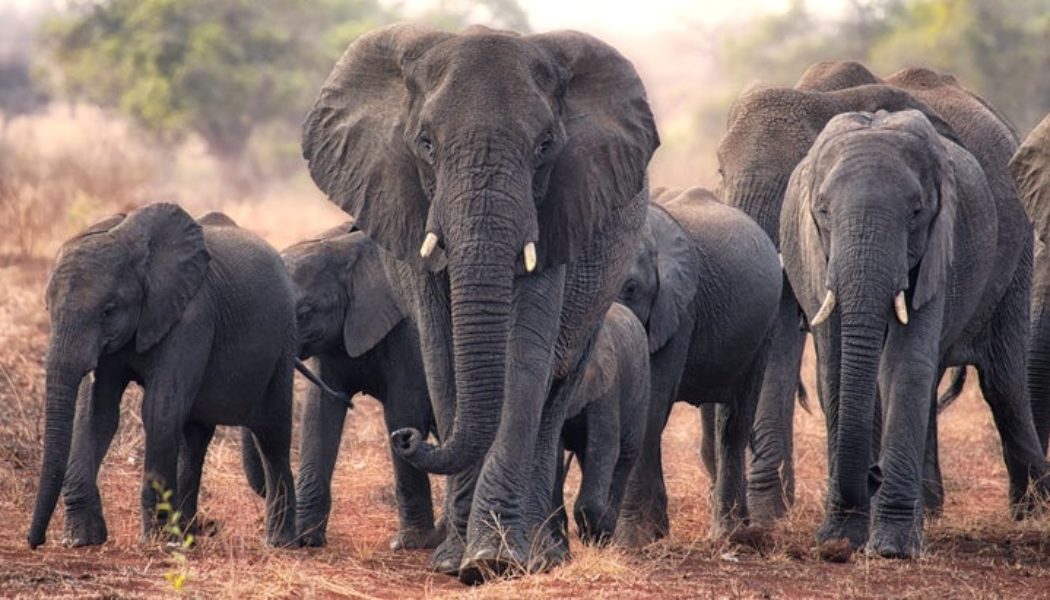Though the U.S. often gets all the credit for inventing the national parks idea, there are a wealth of countries that, since Yellowstone was instated as the first national park in 1872, have taken the notion and run with it. The result? Protections over vast natural empires of electric-blue glacial lakes, galloping wildebeest, colorful eroded badlands, and craggy, snow-capped peaks worldwide.
The parks on this list span six continents and tens of millions of acres, offering excellent fodder for any nature-addicted traveler looking to jump-start their wanderlust and plan the next adventure. From Costa Rica to Croatia, we’ve uncovered the very best.
Africa
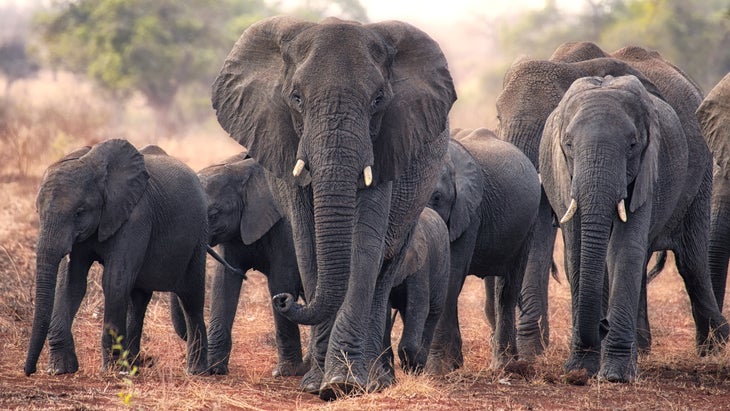
Kruger National Park, South Africa
Perhaps the most iconic safari park in the world, Kruger is a bastion for animal lovers dreaming of an up-close look at Africa’s famous wildlife. The park’s immense boundary stretches for nearly 2 million hectares—larger than the state of Connecticut—and once inside, visitors can embark on guided night safaris, speed along on game drives, enjoy walking tours through the bush, or stay at Ngala Tented Camp (from $952 per person per night) on the Timbavati River.
Mana Pools, Zimbabwe
When the rainy season dumps a deluge along the fragile plains bordering Zimbabwe’s Zambezi River (typically December through March), a series of seasonal lakes form and then slowly evaporate under the hot sun, turning the remaining pools into excellent grounds for wildlife viewing. Under the shade of fig, acacia, and baobab trees, travelers to this Unesco World Heritage Site have the opportunity to spot many of Africa’s “big five”—lions, leopards, elephants, and Cape buffalo—in addition to zebras, cheetahs, and more than 450 species of nesting and migratory birds.
Serengeti, Tanzania
The Africa of lore awaits at Serengeti: lions surveying their kingdom atop grassy kopjes, leopards prowling in dense riparian areas, and each year from May through October, a migration of more than 1.3 million wildebeest, 250,000 zebras, and 500,000 gazelles through the park and into neighboring Maasai Mara National Reserve. This expansive park covers more than 5,700 square miles of golden hillsides and ungulate-freckled plains and is hands down one of the best places to safari on earth.
Asia
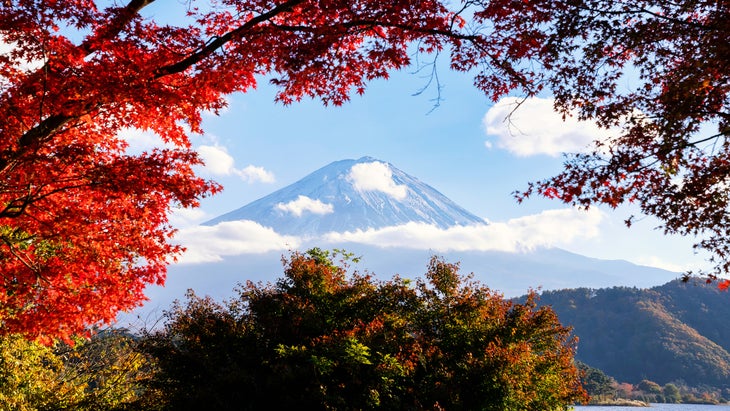
Fuji-Hakone-Izu, Japan
Set aside as a natural wonder in 1936, Fuji-Hakone-Izu is home to steamy hot springs, rippling waterfalls, volcanic islets, and, of course, Japan’s highest peak, Mount Fuji. It’s a park as diverse as Japan itself, with top-tier surfing in the Izu Islands, sizzling sulfur vents at Owakudani, and thousand-year-old shrines. Hike to the snow-capped summit of this sacred mountain and feel the modern world melt away.
Göreme, Turkey
Recently touted as being the fifth most popular national park on TikTok, Göreme, in central Turkey, is so much more than a haven for flocking influencers. The protected area, which is—you guessed it—a Unesco World Heritage Site, is full of Byzantine-era art, painted badlands, and underground towns dating back to the 4th century. Perhaps most picturesque are the landscape’s many eroded hoodoos, known locally as fairy chimneys, which you can explore on one of the area’s many loop trails.
Khao Sok, Thailand
Chattering macaques hop from treetop to treetop in this national park, which houses the oldest evergreen rainforest in the world. Located on the mainland between Phuket and Krabi, Khao Sok is a lush jungle where towering mountains of limestone rise from the earth like rocky fingers. Visitors have the opportunity to catch some z’s at Floating Bungalows Khoa Sok Lake (from $198 per person per night) between their on-water safaris and elephant sightings.
Komodo, Indonesia
In a land where rust-red mountains crest up from the sea and kaleidoscopic coral reefs lurk just below the surface, it might be a touch easier to believe that dinosaurs still roam the earth. Famed for its most notorious resident, the Komodo dragon, which exists nowhere else in the world, this far-flung island park straddles the Indian and South Pacific Oceans and is a mecca for reptile lovers and reef divers.
Guilin Lijiang, China
With a landscape so breathtaking that it appears on China’s 20 yuan note, Guilin Lijiang National Park centers around the Li River and the Seussian-like horizon of rugged limestone hills that jut upward from the earth surrounding it. Climb to commanding views of rice terraces along the 1.8-mile Ping’An Trail, or go for a river cruise to absorb the majestic terrain in peace from below.
Nanda Devi and Valley of Flowers, India
Perched high in India’s northwestern corner, these two adjoining national parks preserve a complete ecosystem of high-altitude Himalayan flora and fauna, including blue sheep, Asiatic black bears, and the elusive snow leopard. The Valley of Flowers, with lush meadows full of its namesake blooms, gives way to the harsh mountain wilderness of Nanda Devi, a steep, glaciated peak stretching 25,643 feet above sea level. One way to explore this area up close and on foot? Take a six-day guided trek.
Sagarmatha, Nepal
Hiking to Everest Base Camp is a life-list item for many, one that lies inside Nepal’s most noteworthy national park—Sagarmatha—which translates to “goddess of the sky” in Nepali. The region, which is the traditional homeland of the Sherpa people, is known for its high-altitude peaks, though the park’s terrain varies from jewel-toned glacial rivers to grazing lands for herds of yak to verdant forests of bamboo and hemlock. Consider a guided backpacking trip to help support the local Sherpa people and ensure a safe trip to base camp.
Wadi Rum Protected Area, Jordan
Like many places on this list, Wadi Rum is renowned for its ancient cultural and natural resources. Located some 200 miles south of the capital of Amman, the park contains honeycombed cliffs of vibrant red sandstone, narrow ravines carved by millennia of erosion, and impressive archeological remains, including more than 25,000 petroglyphs, dating back 12,000 years. Marvel at the coral-hued sunrise from your very own tent at Wadi Rum Starlight (from $43 per person per night) before exploring on camelback.
Zhangjiajie National Forest Park, China
With its narrow ravines and forest-laden pinnacles of rock, Zhangjiajie, in central-eastern China, is so gorgeous it looks Photoshopped. Delicate pink spires of quartz sandstone dot the park’s most scenic area around Baofeng Lake, where visitors can take a boat tour or amble across the world’s longest, highest transparent glass bridge for a bird’s-eye view of the otherworldly landscape.
Europe
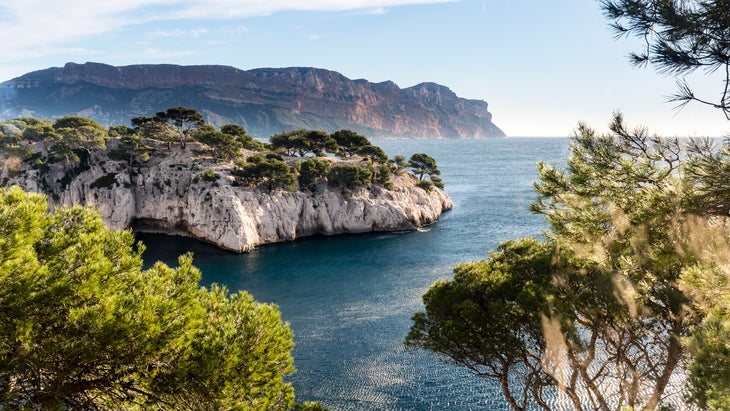
Calanques, France
In French, a calanque is a narrow, cliff-lined inlet made of limestone or other carbonate strata, much like a miniature fjord. This national park in the south of France lends itself to exploring craggy coves and the turquoise waves that envelop them. Break a sweat on one of the area’s dozens of hiking trails, snorkel, or relax aboard a sailboat tour of the sea’s biodiverse waters, home to starfish, sea slugs, and snakelocks anemones.
Lake District, United Kingdom
For expansive views of rolling, emerald hillsides speckled with the occasional sapphire tarn, add Northern England’s Lake District to your bucket list. Full of free-roaming Herdwick sheep, grassy moors, and dozens of opportunities to bed down in a cozy cottage or castle, this park is ripe for long afternoon walks and evenings spent reading Charlotte Brönte, whose seminal novel Jane Eyre is set in this landscape.
Plitvice Lakes, Croatia
Waterfalls, waterfalls, waterfalls. They’re the main course at this 29,842-hectare park centered around 16 lakes that are all interconnected by rippling cascades. Plitvice was designated a Unesco World Heritage Site in 1979 for the unparalleled beauty of its travertine terrace formations, limestone caves, and wide range of wildlife (including wolves, bears, and dozens of bird species) that calls the park home. Head to Entrance 1 for the best photo opportunities.
Rondane, Norway
Swan dive into the verdant and culturally rich Rondane Mountains, in the highlands of eastern Norway. A place known for its rugged, lichen-blotched summits, roiling waterfalls, scenic byways, and rustic mountain huts at Rondvassbu Mountain Lodge (from $14 per person per night), the country’s first national park has something for adventurers of all ages and skill levels, even in winter.
Triglav, Slovenia
In Triglav, the largest protected area in Slovenia, rugged tree-strewn peaks fall away dramatically into mirror-clear azure lakes. Travelers looking to escape the crowds of Europe’s more famous Alps to the west will appreciate the area’s watery wonders, from aquamarine River Soča to picturesque Lake Bled and its church-topped island.
Vatnajökull, Iceland
Vatnajökull is massive. As the largest national park in Europe at 4,600 square miles, it centers on yet another superlative: the continent’s largest glacier, which shares the park’s name. Intrepid travelers can ice climb its namesake feature, hike through glassy frozen caves, or trek through Iceland’s dormant volcanoes and remote rhyolite mountains. It’s a park that encapsulates the country’s nickname: the land of ice and fire.
North and Central America
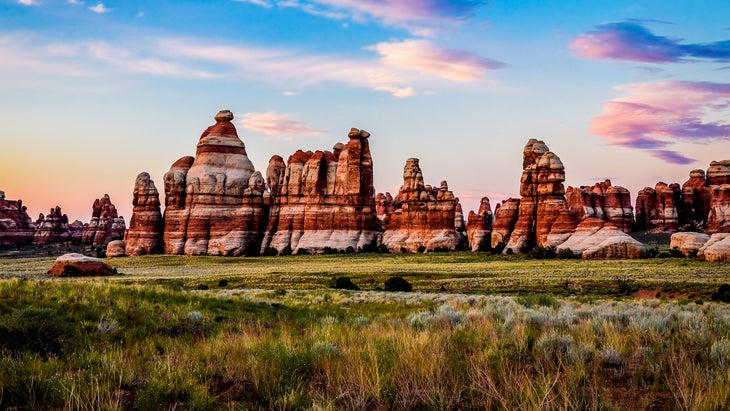
Canyonlands, United States
In America’s National Park System, the Grand Canyon commands all attention when it comes to sprawling, miles-long views of red-rock ravines. But avid park visitors know that Canyonlands is the real winner for those looking to escape throngs of tourists and experience a more rugged sandstone landscape akin to Mars. As Utah’s largest national park, Canyonlands features scenery that is nothing short of stunning, from the mesa-top Island in the Sky District to the mazelike Needles.
Corcovado, Costa Rica
Costa Rica is a country famed for its forward-thinking conservation efforts and breathtaking national parks. Corcovado, on the southern Osa Peninsula, is the best for wildlife seekers. Slow-moving three-toed sloths, brilliantly colored toucans, cacophonous howler monkeys, and endangered jaguars all reside in this untrammeled tropical rainforest. Hire a local guide to spot hard-to-find wildlife on your adventures.
Jasper, Canada
Though sometimes overshadowed by Banff, its cousin to the south, Jasper National Park is the definition of wild and scenic. Home to booming populations of moose, elk, and grizzly bears that take refuge in its snow-topped peaks and conifers, the park is every bit as feral as its inhabitants. Plus, with 1 million-plus more acres than Banff—it’s the largest park in the Canadian Rockies—visitors have the ability to spread out and soak up the solitude they came for, whether it be on a three-mile jaunt to Valley of the Five Lakes or an all-day excursion on the Whistlers Trail.
Wrangell-St. Elias, United States
As the largest national park in America, 13.2 million-acre Wrangell-St. Elias has a lot to live up to. Thankfully, with its tremendous easy-access glaciers, historic mining town of Kennecott, epic rafting trips, and world-class mountaineering, it more than lives up to its hype. Day hikers won’t want to miss the challenging nine-mile trip up to Bonanza Mine.
Yosemite, United States
Yosemite, with its landmark valley of granite domes and thousand-foot waterfalls, is one of the world’s first national parks, protected by Congress in 1890. Now a haven for rock climbers, trail trekkers, and auto tourists, the park includes more than 800 miles of dirt paths through giant sequoia stands, wildflower-lined lakes, and alpine meadows. Consider renting a bike and wheeling across the famed Valley Multi-Use Path to take in the sights from the basin floor.
Oceania and Australia

Cradle Mountain, Lake St. Clair, Tasmania
Separated from southern Australia by the Bass Straight, Tasmania is just about as wild as it gets. Cradle Mountain and Lake St. Clair sit high in the island’s northern region, a glacially carved alpine wilderness marked by serrated dolerite peaks, bright foliage, and sparkling tarns. Backpack the park’s popular 65-kilometer Overland Track by foot, or head off on a mellow trail ride. If you’re lucky, you might even spot a Tassie devil.
Fiordland, New Zealand
Formed over the past 100,000 years, as glaciers gnawed away at the dramatic southern New Zealand ridgeline, Fiordland is best experienced by land and sea. Daily cruises speed in and out of South Island’s Milford Sound, the best known of the area’s 14 fiords, bringing tourists face to face with 161-meter Bowen Falls, the knife’s edge of 5,522-foot Mitre Peak, and the Underwater Observatory, where you can spot fur seals. Ardent backpackers won’t want to miss hiking the Milford Track, one of the country’s top walks.
Tongariro, New Zealand
If you’re a Lord of the Rings fan, you might recognize Tongariro’s desolate volcanoes and serrated peaks as the sinister landscape of Mordor and Mount Doom. Distinguished by Unesco for its spectacular landscapes and cultural significance to the Maori people, this New Zealand locale is perfect for adventurers looking to ski Whakapapa or Tūroa, raft the Tongariro River, or backpack one of the country’s “Great Walks” through this transcendent glacially cut landscape.
Uluru-Kata Tjuta, Australia
Located on the ancestral lands of the Anangu Aboriginal people, the enormous umber-tinted monolith of Uluru (formerly called Ayers Rock) is a critical piece of Australia’s natural and cultural heritage—stories of their creation period, Tjukurpa, originate here. The park offers visitors a chance to marvel at this famous mesa of arkose sandstone, sure, but those willing to slow down and linger a few days can take a Ranger-guided Mala walk for a unique glimpse at one of the oldest cultures on the planet.
South America

Galápagos, Ecuador
The Galapagos archipelago is one of the most biologically unique places in the world. Sure, the park is best known for its native giant tortoises and marine iguanas, but the protected ocean areas between the islands harbor what many consider the best diving and snorkeling on the planet. Hammerhead sharks, manta rays, sea turtles, frogfish, and nudibranchs all call these waters home. Academy Bay Diving helps visitors see them all via day excursions and live-aboard experiences.
Los Glaciares, Argentina
It’s hard to tackle a list of the most mind-blowing national parks in the world without including Argentina’s iconic Fitz Roy Massif. These soaring granitic fins have worked their way into climbing lore—Tommy Caldwell and Alex Honnold famously became the first to traverse the towers in 2014—but the national park surrounding them is also home to less death-defying fare, like easy hikes overlooking immense icefields, crampon-clad glacier trekking, and overnight backpacking trips.
Torres del Paine, Chile
Often touted as the eighth wonder of the world, Chile’s Torres del Paine—which translates to “towers of blue” in Spanish and Tehuelche—truly lives up to its name. Encompassing 181,414 hectares of sky-high granite towers, shimmering teal lakes, and deep cobalt crevasses, the park is famous for its alpine climbing and snapshot-worthy overnight treks, like the 41.3-mile W Circuit.
Join Our Telegram Group : Salvation & Prosperity
